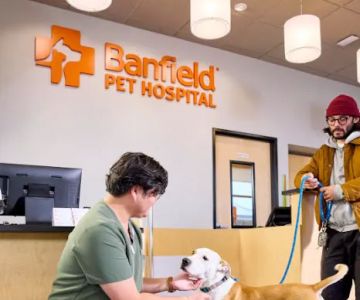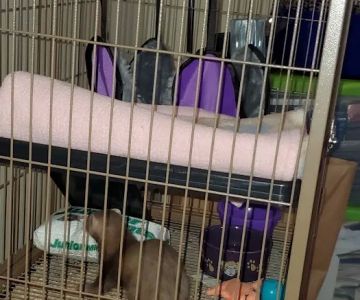1. Introduction: The Growing Concern of Obesity in Indoor Pets
Obesity has become a common issue among pets, especially indoor pets. With limited space to move around, fewer opportunities to exercise, and easy access to food, it’s no surprise that many pets are struggling to maintain a healthy weight. Overweight pets are at higher risk for developing a variety of health problems, including heart disease, diabetes, and joint issues. As responsible pet owners, it’s important to take steps to prevent obesity in our furry friends and ensure they live happy, healthy lives.
In this article, we will discuss the causes of obesity in indoor pets, the risks associated with being overweight, and most importantly, effective strategies for preventing obesity. By adopting some simple lifestyle changes, you can help your pet maintain a healthy weight and enjoy a more active life. From exercise routines to proper feeding practices, here’s how you can manage your pet’s weight and promote overall health.

5900 Carlisle Pike, Mechanicsburg, PA 17050, USA
See Details2. Causes of Obesity in Indoor Pets
Obesity in indoor pets is a result of a combination of factors, including insufficient physical activity, poor diet, and even genetics. Understanding the causes of obesity is the first step in preventing it. Let’s explore some common reasons why indoor pets are at higher risk for weight gain.
2.1 Lack of Physical Activity
Unlike outdoor pets that have the freedom to roam and explore, indoor pets are often confined to a small space. This lack of movement can lead to weight gain, especially if they are not provided with opportunities for exercise. Without regular physical activity, pets may become sedentary and prone to obesity.
To prevent obesity, it’s important to create an environment where your pet can engage in regular exercise. This could include playing with toys, walking on a leash, or setting up an obstacle course in the living room. Even short bursts of activity can help burn off excess calories and keep your pet’s weight in check.
2.2 Overfeeding and Poor Diet
Overfeeding is another significant contributor to obesity in indoor pets. It’s easy to fall into the trap of giving treats too often or leaving food out for your pet throughout the day. While treats are a great way to bond with your pet, overindulgence can lead to weight gain.
Additionally, the quality of your pet’s diet plays a crucial role in managing weight. Feeding them high-calorie or low-quality food can lead to obesity. It’s essential to provide a balanced, nutritious diet that meets your pet’s specific needs. Consulting your veterinarian about portion sizes and the best food for your pet can ensure that they receive the proper nutrients without consuming excess calories.
2.3 Lack of Mental Stimulation
Pets that are bored and lack mental stimulation may turn to food as a form of entertainment. This behavior can lead to overeating and, ultimately, weight gain. Providing mental challenges through puzzle toys, interactive games, or training sessions can help prevent your pet from eating out of boredom.
Incorporating both physical and mental exercise into your pet’s daily routine is key to preventing obesity. This holistic approach ensures that your pet stays engaged and active, reducing the likelihood of overeating due to boredom or stress.
3. Risks of Obesity in Indoor Pets
The risks of obesity in pets are far-reaching and can affect nearly every aspect of their health. Obesity is not just about appearance; it’s a serious condition that can lead to various health problems and reduce your pet’s quality of life. Let’s look at some of the key risks associated with overweight pets.
3.1 Increased Risk of Heart Disease
Just like humans, pets that are overweight or obese are at a higher risk of developing heart disease. The extra weight puts a strain on the heart and circulatory system, increasing the likelihood of heart problems. Overweight pets may also suffer from high blood pressure, which further contributes to cardiovascular issues.
3.2 Joint Problems and Arthritis
The excess weight that comes with obesity puts additional stress on your pet’s joints, leading to pain, stiffness, and a greater risk of developing arthritis. This can make it difficult for your pet to move around, exercise, or even walk comfortably, which can further contribute to a sedentary lifestyle.
Maintaining a healthy weight is essential for reducing the risk of joint problems. By controlling your pet’s weight and encouraging regular physical activity, you can help prevent these issues and promote better mobility.
3.3 Diabetes
Obesity is one of the leading causes of diabetes in pets, particularly in cats and dogs. Excess body fat makes it harder for the body to regulate blood sugar levels, which can lead to insulin resistance and, eventually, diabetes. This condition requires lifelong management and can significantly impact your pet’s quality of life.
Preventing obesity in your pet is one of the most effective ways to reduce the risk of developing diabetes. Regular exercise and a balanced diet are key factors in maintaining healthy blood sugar levels.
4. Tips for Preventing Obesity in Indoor Pets
Preventing obesity in indoor pets requires a combination of good nutrition, regular exercise, and mental stimulation. Here are some practical tips that can help you keep your pet at a healthy weight:
4.1 Provide Regular Exercise
Physical activity is essential for maintaining a healthy weight in pets. Try to provide at least 30 minutes to an hour of exercise each day, depending on your pet’s age and breed. This can include walks, playtime, or even interactive games that get your pet moving.
For cats, consider using laser pointers, feather wands, or other toys that encourage movement. For dogs, regular walks or trips to the park can provide both exercise and mental stimulation.
4.2 Control Portion Sizes and Avoid Overfeeding
One of the easiest ways to manage your pet’s weight is to control their portion sizes. Avoid free-feeding, which allows your pet to eat whenever they want. Instead, measure out your pet’s food according to their specific dietary needs and divide it into multiple meals throughout the day.
Be mindful of treats as well. While it’s tempting to give your pet extra snacks, excessive treats can quickly lead to weight gain. Use treats sparingly, and consider healthier options like carrots or apple slices for dogs, or catnip for cats.
4.3 Encourage Mental Stimulation
Mental stimulation is just as important as physical exercise when it comes to preventing obesity. Provide your pet with interactive toys, puzzle feeders, and new experiences that engage their mind. This will help prevent boredom and reduce the likelihood of overeating out of frustration or stress.
4.4 Regular Vet Check-Ups
Regular veterinary visits are crucial for monitoring your pet’s health and weight. Your vet can help assess your pet’s weight, provide dietary recommendations, and identify any potential health issues related to obesity. By staying on top of your pet’s health, you can catch weight-related problems early and prevent long-term complications.
5. Conclusion: Helping Your Indoor Pet Stay Healthy
Preventing obesity in indoor pets is crucial for their overall health and well-being. By providing regular exercise, controlling food portions, and offering mental stimulation, you can help your pet maintain a healthy weight and live a happier, more active life. As a pet owner, it’s your responsibility to create an environment that encourages healthy habits and supports your pet’s physical and emotional needs.
If you're unsure about your pet’s diet or need advice on managing their weight, don't hesitate to consult a professional. At Hidden Brook Veterinary, we provide expert guidance on pet care and nutrition to ensure your furry friend stays in top shape.










